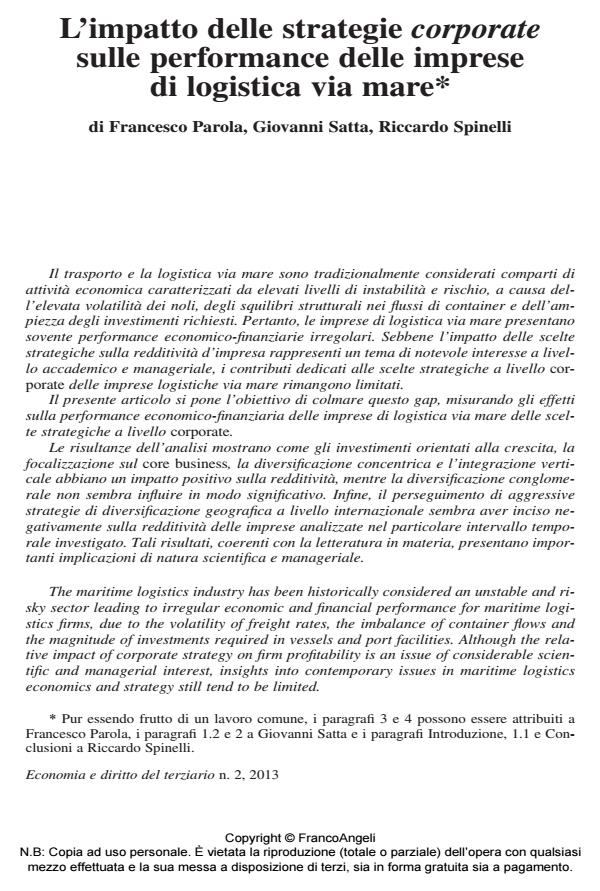L’impatto delle strategie corporate sulle performance delle imprese di logistica via mare
Titolo Rivista ECONOMIA E DIRITTO DEL TERZIARIO
Autori/Curatori Francesco Parola, Giovanni Satta, Riccardo Spinelli
Anno di pubblicazione 2014 Fascicolo 2013/2
Lingua Italiano Numero pagine 25 P. 201-225 Dimensione file 967 KB
DOI 10.3280/ED2013-002002
Il DOI è il codice a barre della proprietà intellettuale: per saperne di più
clicca qui
Qui sotto puoi vedere in anteprima la prima pagina di questo articolo.
Se questo articolo ti interessa, lo puoi acquistare (e scaricare in formato pdf) seguendo le facili indicazioni per acquistare il download credit. Acquista Download Credits per scaricare questo Articolo in formato PDF

FrancoAngeli è membro della Publishers International Linking Association, Inc (PILA)associazione indipendente e non profit per facilitare (attraverso i servizi tecnologici implementati da CrossRef.org) l’accesso degli studiosi ai contenuti digitali nelle pubblicazioni professionali e scientifiche
Il trasporto e la logistica via mare sono tradizionalmente considerati comparti di attività economica caratterizzati da elevati livelli di instabilità e rischio, a causa dell’elevata volatilità dei noli, degli squilibri strutturali nei flussi di container e dell’ampiezza degli investimenti richiesti. Pertanto, le imprese di logistica via mare presentano sovente performance economico-finanziarie irregolari. Sebbene l’impatto delle scelte strategiche sulla redditività d’impresa rappresenti un tema di notevole interesse a livello accademico e manageriale, i contributi dedicati alle scelte strategiche a livello corporate delle imprese logistiche via mare rimangono limitati. Il presente articolo si pone l’obiettivo di colmare questo gap, misurando gli effetti sulla performance economico-finanziaria delle imprese di logistica via mare delle scelte strategiche a livello corporate. Le risultanze dell’analisi mostrano come gli investimenti orientati alla crescita, la focalizzazione sul core business, la diversificazione concentrica e l’integrazione verticale abbiano un impatto positivo sulla redditività, mentre la diversificazione conglomerale non sembra influire in modo significativo. Infine, il perseguimento di aggressive strategie di diversificazione geografica a livello internazionale sembra aver inciso negativamente sulla redditività delle imprese analizzate nel particolare intervallo temporale investigato. Tali risultati, coerenti con la letteratura in materia, presentano importanti implicazioni di natura scientifica e manageriale
Francesco Parola, Giovanni Satta, Riccardo Spinelli, L’impatto delle strategie corporate sulle performance delle imprese di logistica via mare in "ECONOMIA E DIRITTO DEL TERZIARIO " 2/2013, pp 201-225, DOI: 10.3280/ED2013-002002